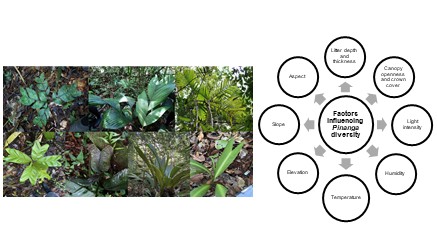THE EFFECTS OF RAINFALL ON Penaeus monodon Fabricius POPULATIONS IN THE SEGARA ANAKAN LAGOON, CENTRAL JAVA, INDONESIA
Downloads
Segara Anakan Lagoon (SAL) is widely known as a traditional fishing ground for many aquatic organisms and is located in Central Java, in an area with high rainfall rates. The objectives of this study were to determine the effects of rainfall on the distribution of Penaeus monodon Fabricius in SAL and/or mangrove waters and to explain the cause of yearly fluctuations in this area’s fish catch during a 13-year period from 1998 to 2011. The effects of rainfall on the local distribution and abundance of shrimp in SAL, Cilacap, Central Java, Indonesia, were examined using the Anco method for three periods, namely: first period (i.e., commercial catch production, 1998–2011), second period (December 2010–November 2011) and third period (December 2011–April 2012) as part of a shrimp fishery and eco-biology study in this region. The marked increase in rainfall from 557 mm during the East Monsoon (June–August) to 1,225 mm in the second transition season (September–November) and West Monsoon (December–February) in the Segara Anakan region enhanced the seasonal movement of shrimp into the Zone IV fishing ground and produced an initial increase in the abundance of adults (CL>25 mm) in the region from 312 to 2,630 individuals. This initial increase in adult abundance enhanced the shrimp’s reproductive potential, while heavy rainfall indirectly assisted the recruitment of young shrimp into the estuary, their growth, and survival, to increase shrimp abundance in the following year. Lower rainfalls from July to September) adversely affected shrimp population and usually resulted in smaller populations (312 individuals). Statistical analysis of the relationship between shrimp catch and annual rainfall showed a high level of significance at 1%.
Downloads
Authors who publish with this journal agree with the following terms:
- Authors retain copyright and grant the journal right of first publication, with the work 1 year after publication simultaneously licensed under a Creative Commons attribution-noncommerical-noderivates 4.0 International License that allows others to share, copy and redistribute the work in any medium or format, but only where the use is for non-commercial purposes and an acknowledgement of the work's authorship and initial publication in this journal is mentioned.
- Authors are able to enter into separate, additional contractual arrangements for the non-exclusive distribution of the journal's published version of the work (e.g., post it to an institutional repository or publish it in a book), with an acknowledgement of its initial publication in this journal.
- Authors are permitted and encouraged to post their work online (e.g., in institutional repositories or on their website) prior to and during the submission process, as it can lead to productive exchanges, as well as earlier and greater citation of published work (See The Effect of Open Access).




























